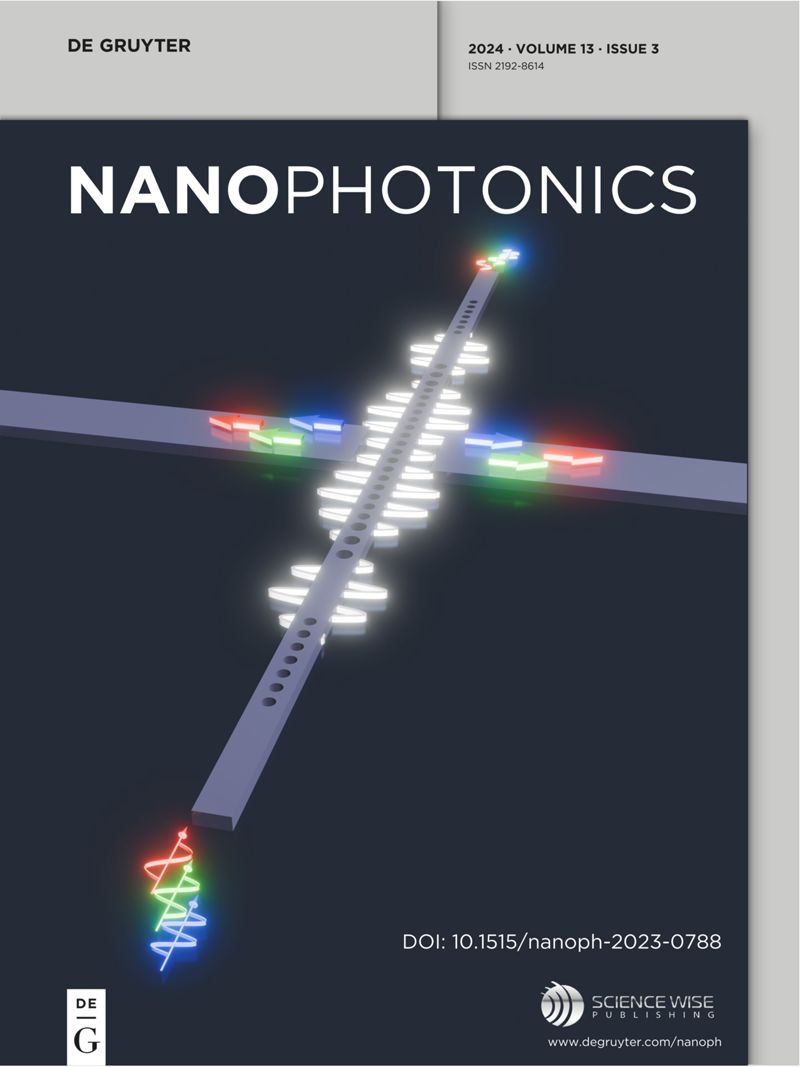Chip-integrated polarization multiplexed metasurface for simultaneous generation of versatile terahertz vortices
IF 6.5
2区 物理与天体物理
Q1 MATERIALS SCIENCE, MULTIDISCIPLINARY
引用次数: 0
Abstract
Terahertz vortex beams, carrying orbital angular momentum (OAM), are quite desirable for enhancing data transmission capability in telecommunication. However, it faces fundamental and technical challenges in a single metasurface to simultaneously generate orthogonal basis vortices with linear polarization (芯片集成极化多路超表面同时产生通用太赫兹涡旋
携带轨道角动量(OAM)的太赫兹涡旋波束在提高通信数据传输能力方面是非常理想的。然而,在单一超表面上,如何在正交偏振光入射下同时产生线性极化(x极性和y极性)和圆极化(左极性和右极性)的正交基涡,面临着基础和技术上的挑战。在这里,我们提出了一个芯片集成的太赫兹全介电超表面,以证明在x和y偏振光入射下,在不同拓扑电荷下同时产生四通道正交极化涡旋光束。极化复用超表面仅采用由维持极化元原子和转换极化元原子组成的传播相位策略设计。通过合理安排双折射元原子阵列,可定制诱导x和y极化的附加相位,实现涡旋光束中极化和拓扑电荷的同时控制,为携带信息提供了更大的自由度。实验结果与仿真结果吻合较好。这种超表面方法为进一步合成大容量通信所需的各种极化涡提供了完整的极化基础。
本文章由计算机程序翻译,如有差异,请以英文原文为准。
求助全文
约1分钟内获得全文
求助全文
来源期刊

Nanophotonics
NANOSCIENCE & NANOTECHNOLOGY-MATERIALS SCIENCE, MULTIDISCIPLINARY
CiteScore
13.50
自引率
6.70%
发文量
358
审稿时长
7 weeks
期刊介绍:
Nanophotonics, published in collaboration with Sciencewise, is a prestigious journal that showcases recent international research results, notable advancements in the field, and innovative applications. It is regarded as one of the leading publications in the realm of nanophotonics and encompasses a range of article types including research articles, selectively invited reviews, letters, and perspectives.
The journal specifically delves into the study of photon interaction with nano-structures, such as carbon nano-tubes, nano metal particles, nano crystals, semiconductor nano dots, photonic crystals, tissue, and DNA. It offers comprehensive coverage of the most up-to-date discoveries, making it an essential resource for physicists, engineers, and material scientists.
 求助内容:
求助内容: 应助结果提醒方式:
应助结果提醒方式:


